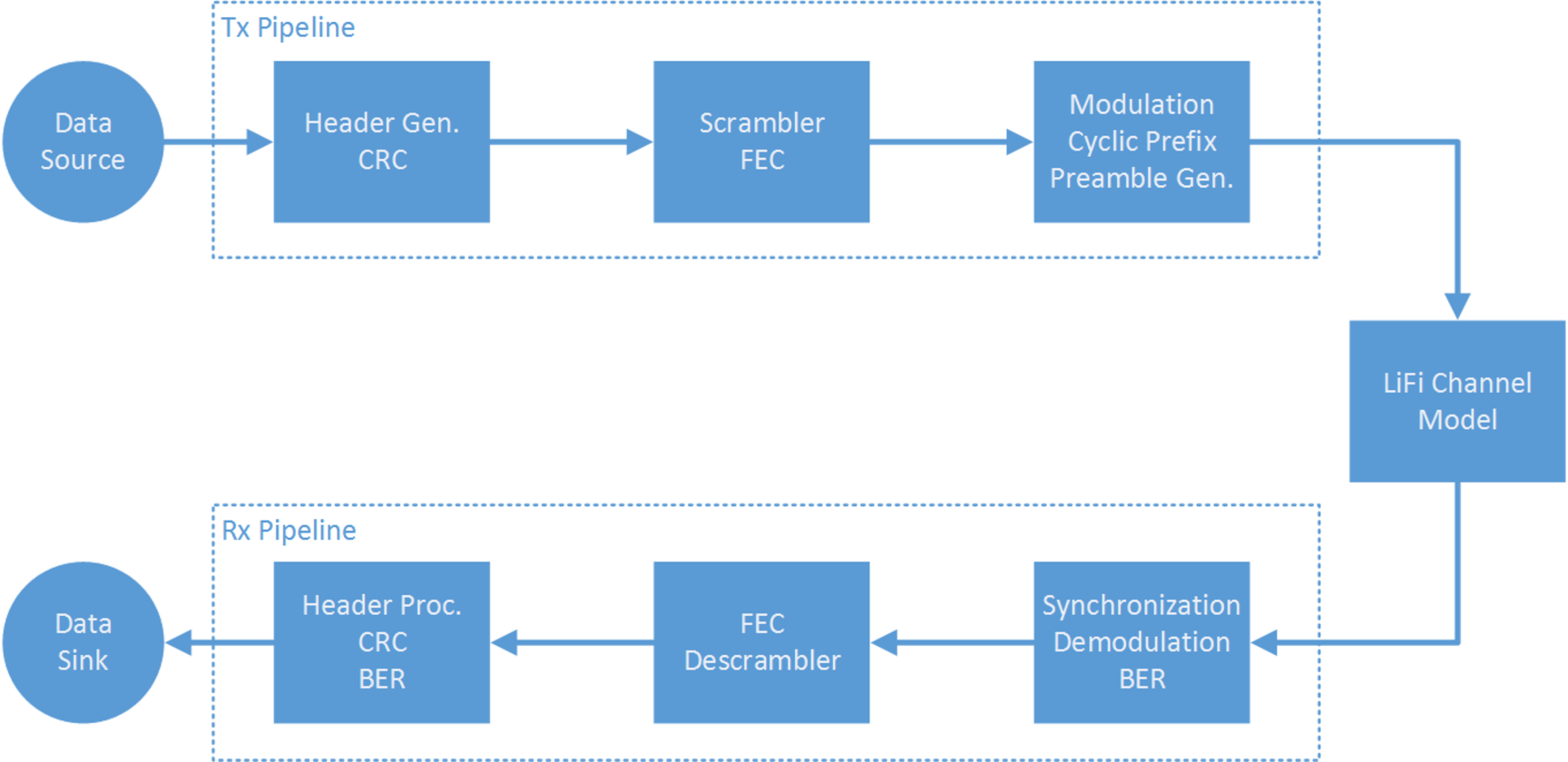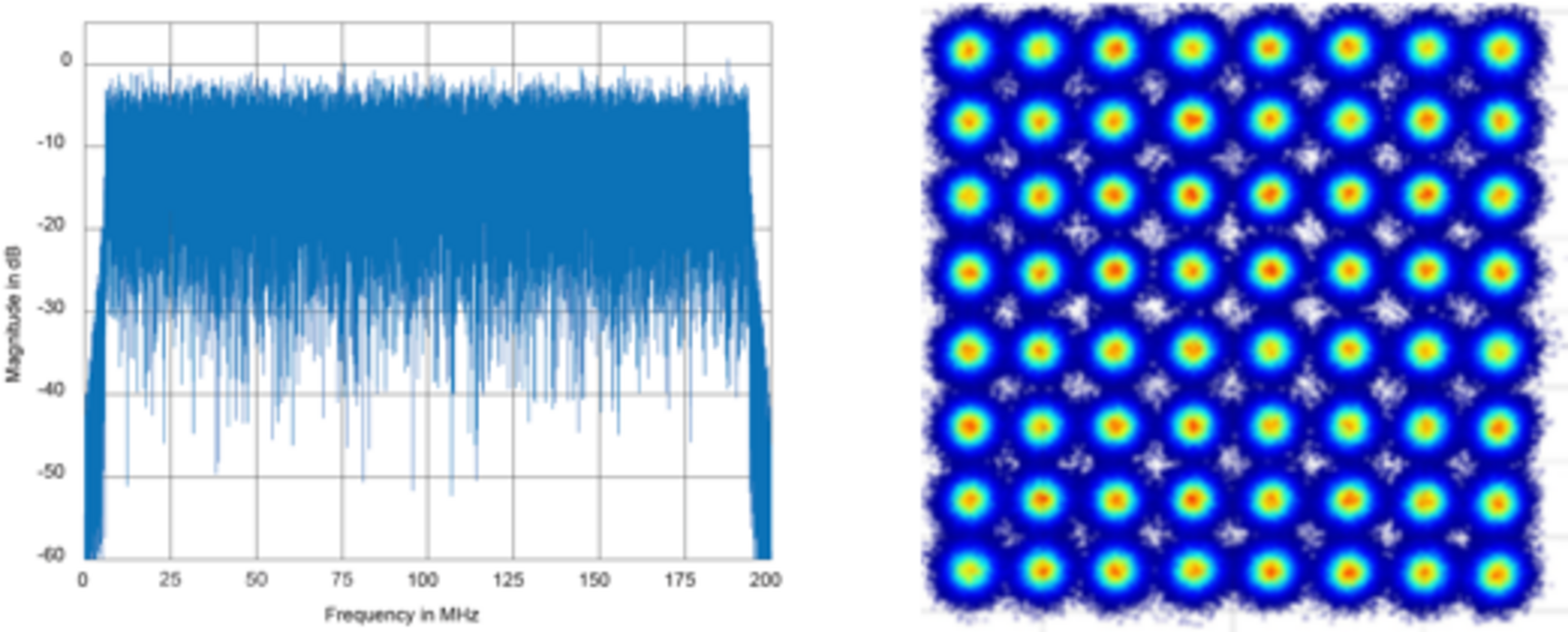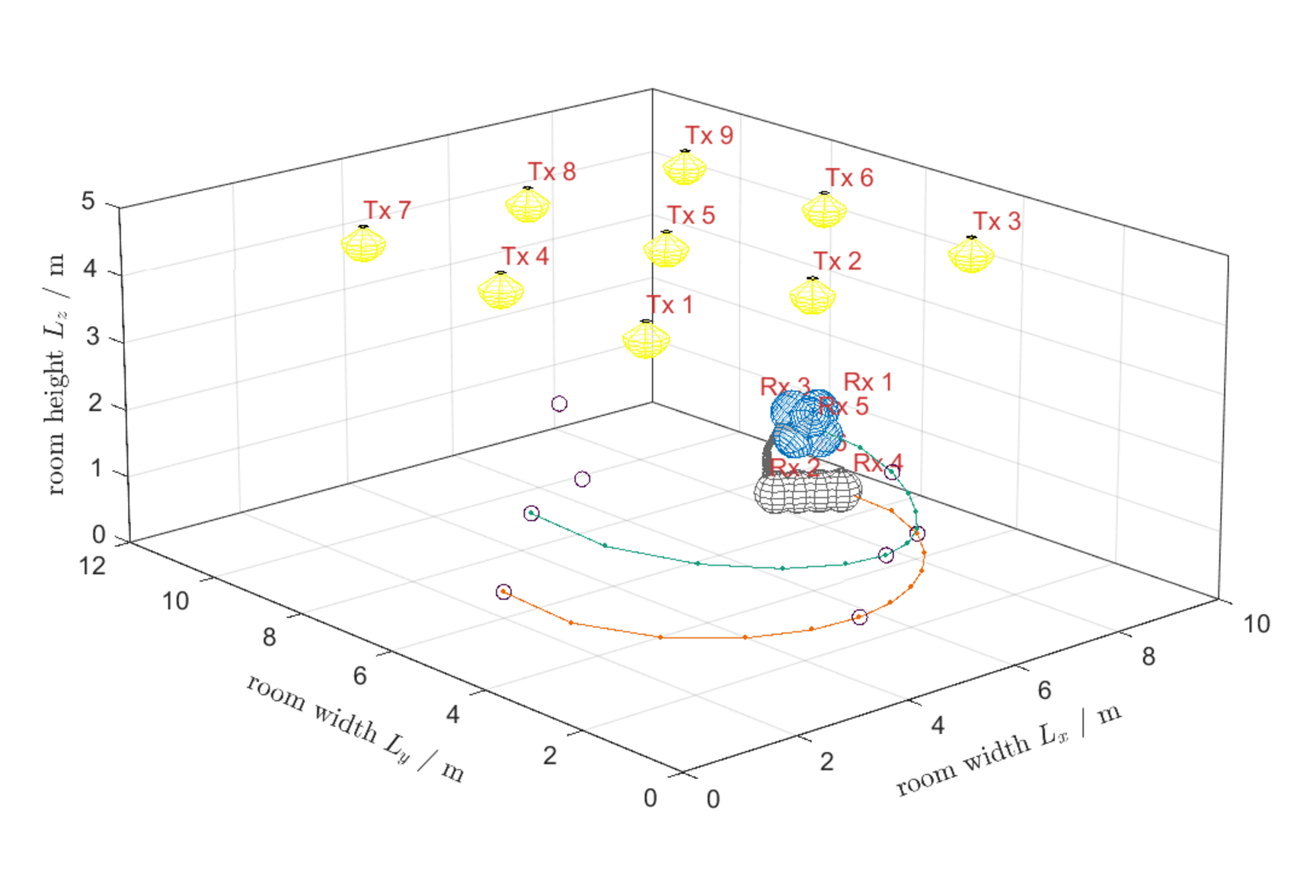
At a Glance
The LiFi Software Suite provides a comprehensive toolkit for simulation of LiFi systems. It comprises multiple physical layer (PHY) implementations as well as models for the optical channel. The implemented algorithms have been tested and verified in lab and field trials. The LiFi software suite supports also offline experiments and LiFi network planning.
Features
Physical Layer (PHY) Implementations in MATLAB:
Multiple PHYs are implemented according to established ITU-T standards and upcoming IEEE standards. The PHYs use one of the following modulation formats: either orthogonal frequency division multiplexing (OFDM) or on-off-keying (OOK) modulation.
- ITU-T G.9991 G.vlc: PHY I based on OFDM
- ITU-T G.9960 G.hn: PHY based on OFDM
- IEEE 802.15.13: HB PHY based on OFDM
- IEEE 802.15.13: PM PHY based on OOK
For the different physical layers, all of Physical Coding Sublayer (PCS), Physical Medium Attachment Sublayer (PMA) and Physical Medium Dependent Sublayer (PMD) are implemented. The transmitter and receiver signal processing pipelines are separately available.


LiFi Channel Models in MATLAB:
Multiple channel models are included in the LiFi software suite. Furthermore, custom channel responses can be utilized. The channel simulator comprises the following features:
- Frequency-domain simulation along arbitrary trajectories of mobile users
- Includes analog frontend impairments, LOS, diffuse reflections, blockages

Applications
- LiFi system performance analysis
- LiFi network planning
- Simulations and experiments according to international LiFi communications standards
- Including adaptive bit- and power-loading
- Accurate modeling of LiFi channel impairments